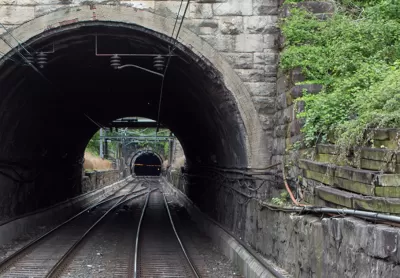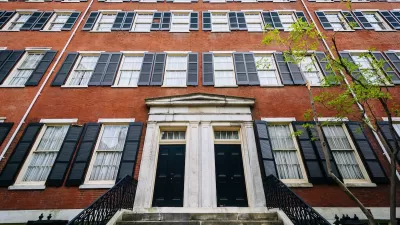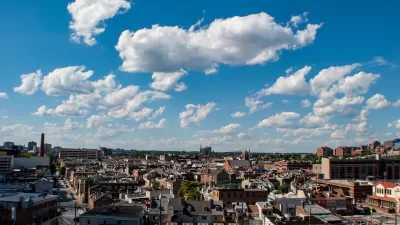Seeking to avoid the mistakes of the past, the city undertook a robust community engagement process when planning the reconstruction of the Baltimore & Potomac Tunnel.

In an excerpt from Lynn Peterson and Elizabeth Doerr’s Roadways for People: Rethinking Transportation Planning and Engineering republished in Next City, Veronica P. McBeth describes the community engagement process undertaken during the massive project to replace and upgrade the Baltimore & Potomac Tunnel, a 1/4 mile long train tunnel connecting key destinations on the 457-mile Northeast Corridor (NEC).
As McBeth explains, “This transformation — with the tunnel newly renamed the Frederick Douglass Tunnel — will include two new high-capacity tubes for passenger trains; new roadway, railroad bridges, rail systems and tracks; and an upgraded West Baltimore MARC station that will be compliant with the Americans with Disabilities Act.” The new tunnel alignment cuts through the largely Black neighborhood Reservoir Hill, which was previously divided by Interstate 83, displacing many residents and cuting the community off from a major park.
To prevent similar damage from the new project, McBeth, as transit bureau chief for the Baltimore City Department of Transportation, “oversaw an engagement process that included dozens of meetings with residents concerned about the potential impact of the project.
The consultants and rail company leading the project needed to understand the nuances of what had happened with major infrastructure projects in the past. They needed to understand that representation matters from the project team level, and that it is important to meet people where they are, using layman’s terms so everyone can understand the scope of the project.
According to McBeth, the team established trust and relationships with community members throughout the planning phase and beyond and committed $50 million to community improvements in a mitigation agreement.
FULL STORY: How Baltimore Engaged Disenfranchised Communities In Its Transportation Planning

Maui's Vacation Rental Debate Turns Ugly
Verbal attacks, misinformation campaigns and fistfights plague a high-stakes debate to convert thousands of vacation rentals into long-term housing.

Planetizen Federal Action Tracker
A weekly monitor of how Trump’s orders and actions are impacting planners and planning in America.

San Francisco Suspends Traffic Calming Amidst Record Deaths
Citing “a challenging fiscal landscape,” the city will cease the program on the heels of 42 traffic deaths, including 24 pedestrians.

Adaptive Reuse Will Create Housing in a Suburban Texas Strip Mall
A developer is reimagining a strip mall property as a mixed-use complex with housing and retail.

Study: Anti-Homelessness Laws Don’t Work
Research shows that punitive measures that criminalized unhoused people don’t help reduce homelessness.

In U.S., Urban Gondolas Face Uphill Battle
Cities in Latin America and Europe have embraced aerial transitways — AKA gondolas — as sustainable, convenient urban transport, especially in tricky geographies. American cities have yet to catch up.
Urban Design for Planners 1: Software Tools
This six-course series explores essential urban design concepts using open source software and equips planners with the tools they need to participate fully in the urban design process.
Planning for Universal Design
Learn the tools for implementing Universal Design in planning regulations.
Heyer Gruel & Associates PA
JM Goldson LLC
Custer County Colorado
City of Camden Redevelopment Agency
City of Astoria
Transportation Research & Education Center (TREC) at Portland State University
Jefferson Parish Government
Camden Redevelopment Agency
City of Claremont





























